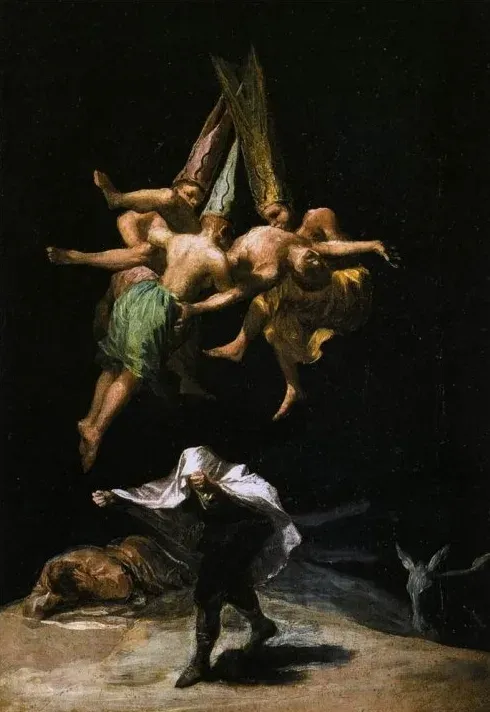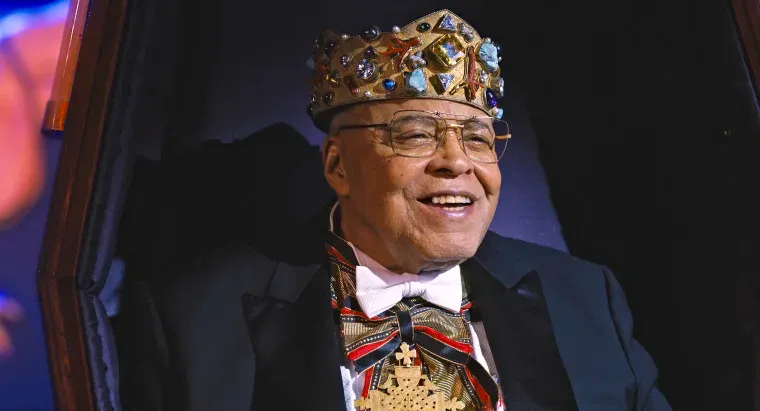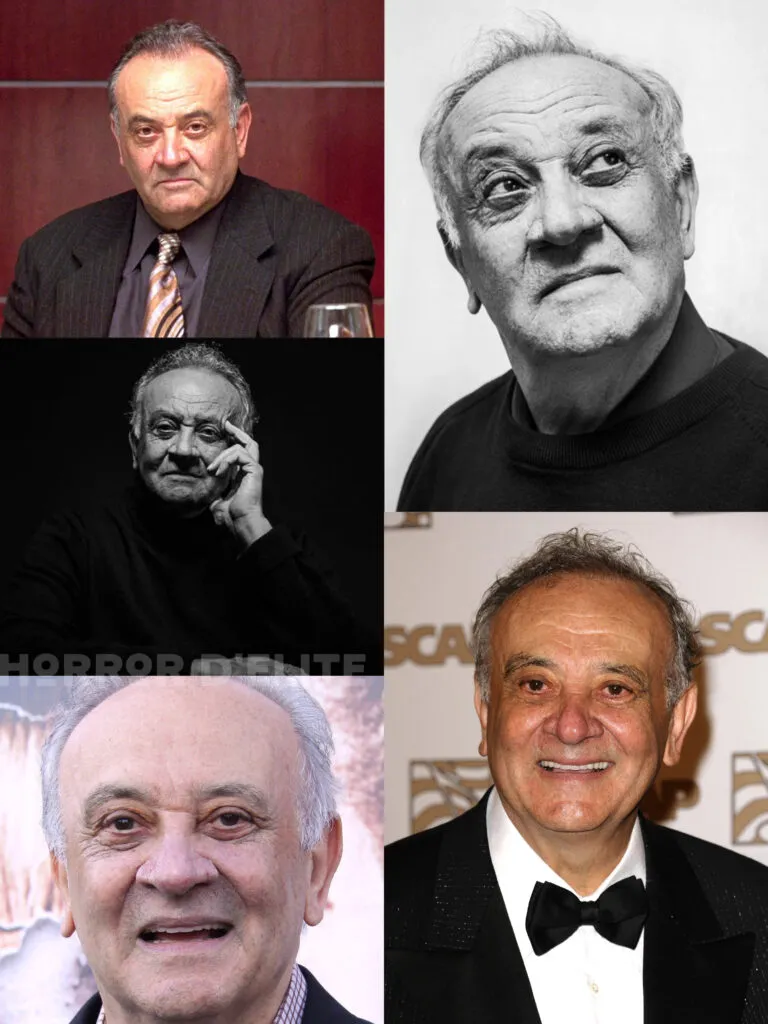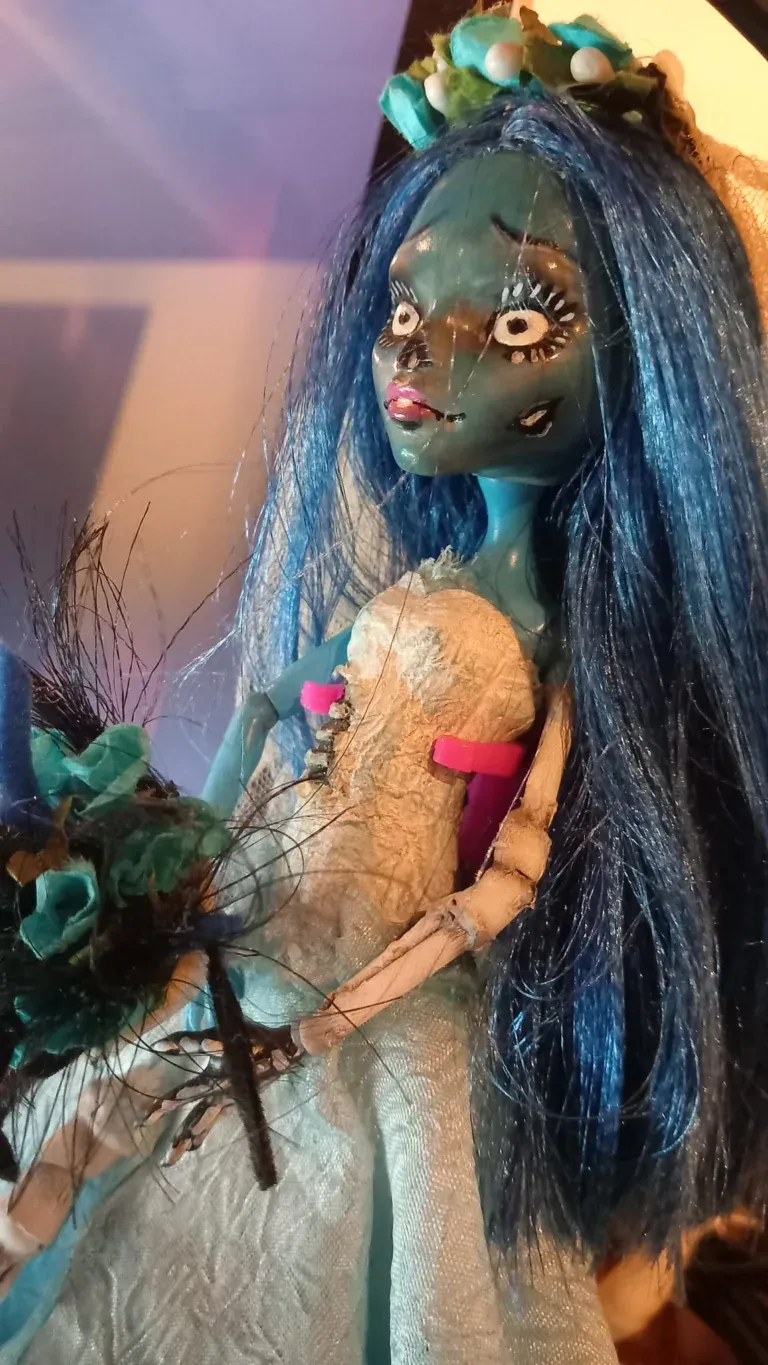The Flight of the Witches
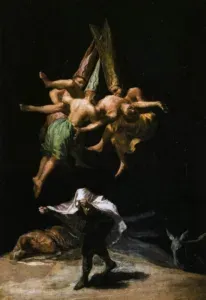 Welcome to our art appointment; today we continue our journey into the wonderful works of the master Francisco Goya with the painting The Flight of the Witches.
Welcome to our art appointment; today we continue our journey into the wonderful works of the master Francisco Goya with the painting The Flight of the Witches.
Description of the Work
In the upper part of The Flight of the Witches, we see three women, three witches, effortlessly supporting the lifeless or unconscious body of a male figure. He has his arms outstretched and his legs crossing the arms of the two witches on the left. One of them, the one with her back turned wearing a green skirt, and the one facing her seem to be biting the poor unfortunate man. In the lower part of the painting lies another anonymous figure, with its face turned down and covering its ears to avoid hearing something we cannot perceive. We also have another male figure who covers his face with a white sheet held with a right hand that seems to have six fingers. He has the courage to endure the buzzing that overwhelms the other, but not the courage to see what is happening. The two figures on the ground break the dancing balance of the flying figures, giving a tone of high drama to the scene, telling us that for humans, what happens in the sky is unbearable; it is a warning for their future. A donkey observes the scene, its muzzle and eyes turned downwards, slumped in a descending position relative to the humans. The simple donkey seems disinterested, but its ears are upright, indicating a certain suppressed attention to what is happening.
Interpretation and Symbolism
Goya’s painting is rich in symbolism and can be interpreted in various ways. The witches represent the irrational fears and superstitions that permeated society at the time. Their ability to fly and carry a helpless man symbolizes the power of popular beliefs to influence and control the human mind. Thus, the male figures in the background could represent human reason, unable to resist the dark forces of ignorance and superstition.
Artistic Technique and Style
Goya employs a painting technique that combines realistic elements with expressionistic strokes to create an atmosphere of unease and mystery. The color palette is dominated by dark tones, with contrasts of light that accentuate the spectral nature of the figures. The brushstrokes are vigorous and free, giving the painting a dynamic and almost dreamlike quality.
Historical and Cultural Context
“The Flight of the Witches” reflects Goya’s concerns regarding the spread of superstition and ignorance in 18th-century Spanish society. During this period, the Spanish Inquisition was still active, and beliefs about witches and occult practices were widespread. Through his work, Goya critiques these beliefs and denounces the manipulation of fear to control the masses.
Legacy and Cultural Impact
Francisco de Goya’s “The Flight of the Witches” is considered a masterpiece of European art, not only for its technical quality but also for its profound symbolic and critical meaning. The work has influenced numerous artists and intellectuals over the centuries, inspiring reflections on the nature of fear, superstition, and power. Its ability to evoke a sense of unease and stimulate critical thinking makes it a timeless piece, still relevant in the contemporary context.
Conclusions
In conclusion, Francisco de Goya’s “The Flight of the Witches” is a work that transcends time and space, offering a sharp critique of human fears and superstitions. Through the masterful use of painting technique and symbolism, Goya invites us to reflect on the dark forces that can control our minds and the necessity to resist ignorance and manipulation. This painting remains a landmark in art and culture, continuing to inspire and question generations of observers and scholars.
 Subscribe to our YouTube channel
Subscribe to our YouTube channel
